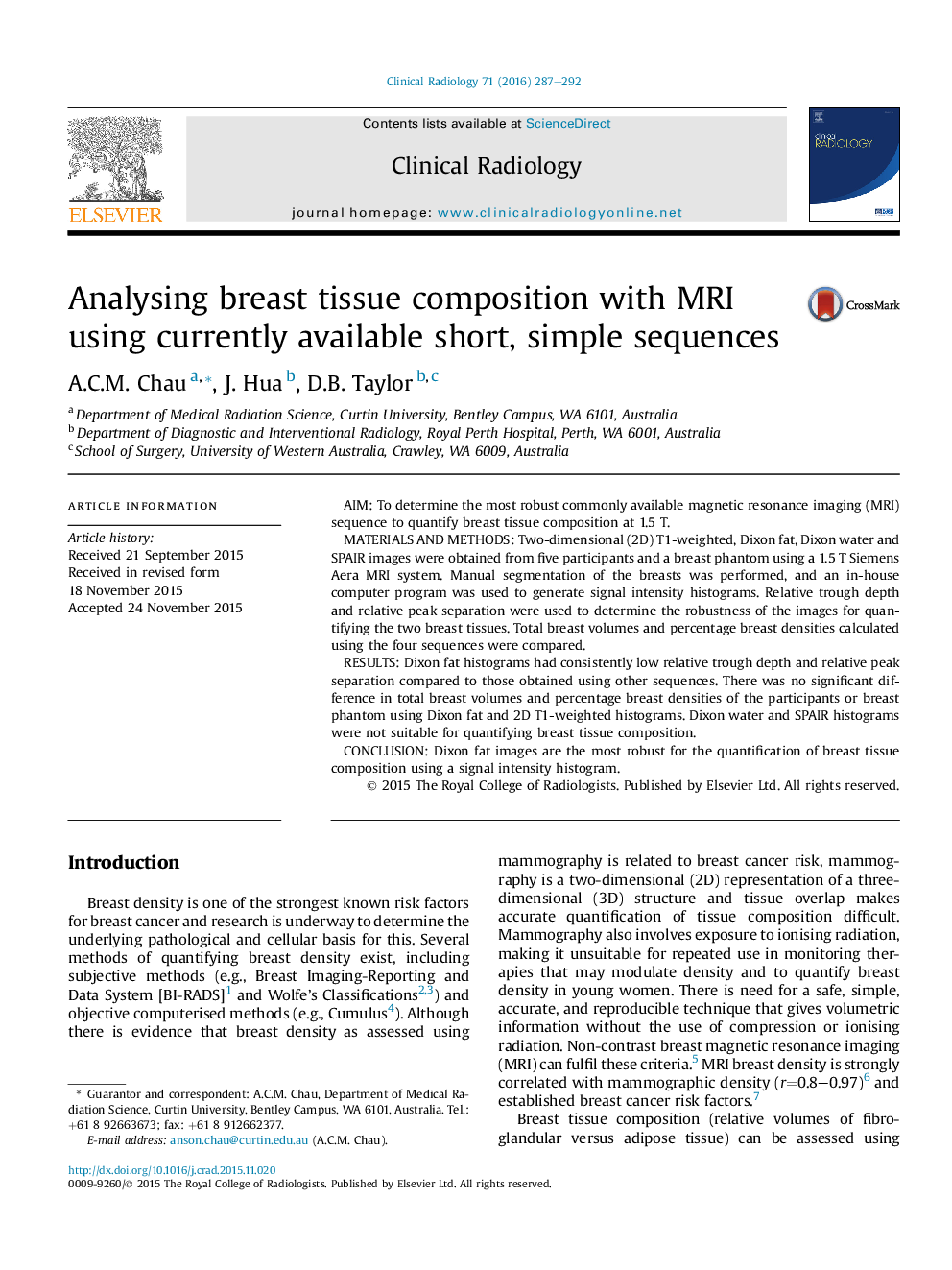| Article ID | Journal | Published Year | Pages | File Type |
|---|---|---|---|---|
| 3981384 | Clinical Radiology | 2016 | 6 Pages |
•Signal intensity histogram analysis can determine robustness of images for quantification of breast tissue composition.•Dixon fat images are the most robust.•The characteristics of the signal intensity histograms from Dixon water and SPAIR images make quantification unsuitable.
AimTo determine the most robust commonly available magnetic resonance imaging (MRI) sequence to quantify breast tissue composition at 1.5 T.Materials and methodsTwo-dimensional (2D) T1-weighted, Dixon fat, Dixon water and SPAIR images were obtained from five participants and a breast phantom using a 1.5 T Siemens Aera MRI system. Manual segmentation of the breasts was performed, and an in-house computer program was used to generate signal intensity histograms. Relative trough depth and relative peak separation were used to determine the robustness of the images for quantifying the two breast tissues. Total breast volumes and percentage breast densities calculated using the four sequences were compared.ResultsDixon fat histograms had consistently low relative trough depth and relative peak separation compared to those obtained using other sequences. There was no significant difference in total breast volumes and percentage breast densities of the participants or breast phantom using Dixon fat and 2D T1-weighted histograms. Dixon water and SPAIR histograms were not suitable for quantifying breast tissue composition.ConclusionDixon fat images are the most robust for the quantification of breast tissue composition using a signal intensity histogram.
